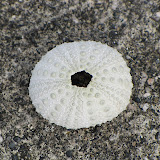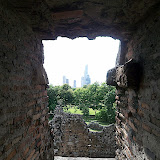The land is one great wild, untidy luxuriant hothouse, made by nature for herself. -Charles Darwin
Although our project is far from finished, the Panama adventure has ended. These first few days home, I find myself looking back and reflecting on the 31 days I spent on a narrow isthmus between two oceans, just north of the equator, on an island, in a rain forest and still find it hard to believe that I was there.
In an attempt to keep the forest experience close, I am reading Tropical Nature: Life and Death in the Rain Forests of Central and South America by Adrian Forsyth and Ken Miyata. Reading this now enables me to make sense of new information, answer questions that I had or didn’t know I had and to revisit the forest, if only in my mind.
A few quotes by Forsythe and Miyata have caught my attention.
But the tangle of diversity that characterizes life in the humid tropics can perplex and confuse on the first exposure.
The first days we spent in and around the rain forest, I was indeed, perplexed. The forest didn’t look like I expected it to. Despite the diversity that everyone talked about, everything looked the same and everything was painted a pale shade of GREEN! It wasn’t until some days into the trip and various trips into the forest, that I started to become aware of the zillions of different types of trees and leaves and the rainbow of colors hiding amongst the subtle shades of green.
The first visit to a tropical rain forest can be a profoundly stimulating experience for any naturalist, but it can also be a drastic shock. An endless stream of information bombards the senses from the richness of tropical nature, yet it arrives as if in a garbled foreign tongue. One is lost without a guide.
I am still being bombarded with information and suspect that I will continue to be for some time. It is now, that I am a great distance from the forest, that I remember acutely the smell of the humid air and the decaying forest. The city around me now just seems like a quiet din. Fire and police sirens, city buses, passing drunks, MSOE students playing on the field and the TV blaring are no comparison to the deep horns of the howler monkeys, the giant cicadas singing relentlessly and the constant hum of a forest decaying and rebuilding.
And had it not been for a trustworthy guide I am most certain I would have been lost! I was fortunate to be on this adventure with a rain forest veteran. I am deeply grateful that Sarah was there to point things out, answer questions, explain and re-explain, read maps, clear spider webs, take pictures, supply bug spray, divert attention away from possible snake sightings and share her knowledge, respect and love for the tropical rain forest.
Until next time. . .





















